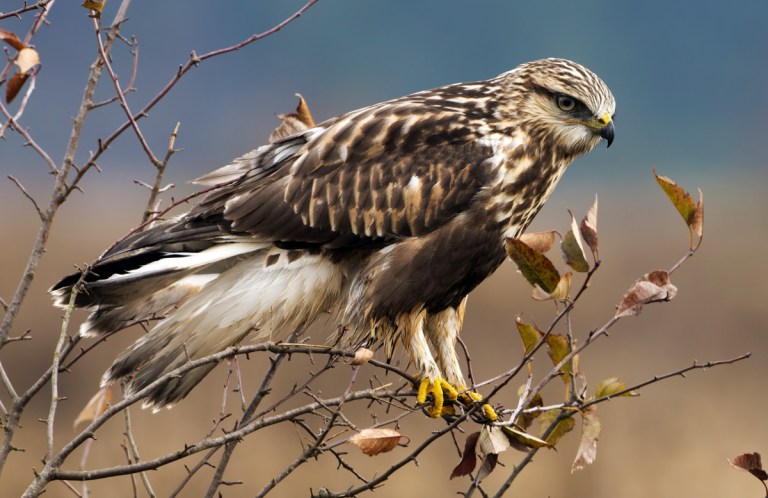
Snowy Owl's North American range: breeding and wintering
The magnificent Snowy Owl is a sight that stops even non-birders in their tracks. This huge white owl with cat-like yellow eyes blends beautifully into snowy winter landscapes. Like an Arctic blizzard, it appears unpredictably and infrequently in the lower 48 states, always causing a stir when it arrives.
Snowy Owls have appealed to people from the beginning of time — Paleolithic cave paintings in France depict them alongside prehistoric lions and horses. Today, the species continues to be popular, with Hedwig of Harry Potter fame bringing the big white owls even more attention.
A Matter of Plumage
Although supposedly female, Hedwig's pure-white plumage signifies a male bird; female and juvenile Snowy Owls show much heavier brown barring on their plumage.
The Snowy is the largest North American owl when measured by weight. Swathed in thick feathers from head to toe, the birds are well-insulated and able to thrive in icy cold regions year-round. Dense feathering adds to the owl's weight and makes the birds twice as heavy as the significantly taller Great Gray Owl.
(Audio by Petr Suvorov, XC219348. Accessible at www.xeno-canto.org/219348.)
The Search for Prey
In North America, Snowy Owls can be found during the breeding season from the western Aleutians in Alaska to northeastern Manitoba, northern Quebec, and northern Labrador in Canada. Although some remain in Arctic areas year-round, others winter farther south; in some years, they fly as far south as central California, Texas, or Florida.
The Snowy Owl is a nomadic species and shows a similar "irruptive" migration pattern to Evening Grosbeak and Pine Siskin. Instead of seed crops, however, the Snowy Owl's populations and movements depend on populations of a small rodent — the lemming — whose abundance varies each year in well-documented boom-and-bust cycles.
In years of plenty, an adult Snowy Owl can eat three to five lemmings a day — about 1,600 a year! This powerful owl also takes hares and other rodents; birds such as ptarmigan, ducks, and geese; fish; and even carrion.
Snowy Owls hunt during the daytime as well as at night, particularly during the summer, when Arctic days last 24 hours. They use both sight and sound to locate prey, snagging their quarry from the ground, in flight, or from the water. Snowy Owls sometimes hover while hunting and can be seen walking along the ground in search of prey.

Snowy Owl by Jim Cumming
Fierce Nest Defenders
Snowy Owls are monogamous and mate for life. Their nest, a simple scrape on the ground, is usually positioned in a raised area such as a hummock or boulder that provides a good lookout spot. The birds aggressively protect their nest and young against intruders such as gulls, foxes, and wolves.
The female Snowy, whose mottled plumage provides good camouflage against the tundra, takes on all the egg incubation and chick care, while the male brings food to the nest. In lean lemming years, a pair may not produce any offspring at all, but during lemming population booms, Snowy Owls can raise broods that are several times their normal size, sometimes laying up to 11 eggs.
Tracking the Snowy Owl
Since 2013, Project SNOWstorm has been tracking Snowy Owls via GPS transmitters in the Arctic and on their wintering grounds. The data gathered is helping scientists better understand this owl's ecology and engage people in their conservation.
Last summer, the project tagged juvenile Snowy Owls in the nest — an unprecedented step that will enable researchers to follow the young birds through their first winter and assess survival rates.
Threats to an Arctic Icon
Partners in Flight includes the Snowy Owl on its Yellow Watch List (declining species facing moderate to high threats), a category shared by Greater Sage-Grouse, Eastern Whip-poor-will, and Flammulated Owl. One of the biggest threats Snowy Owls face may be climate change, which could lead to habitat loss and a decrease in prey.
During migration and winter, Snowy Owls face collisions threats from cars, communication towers, wind turbines, and airplanes.
ABC programs effectively address threats faced by the Snowy Owl and many other birds, ranging from collisions solutions to our BirdScapes approach to bird conservation, which aims to conserve habitat across birds' full life cycles.
Donate to support ABC's conservation mission; 1:1 match through Dec. 31!



















































